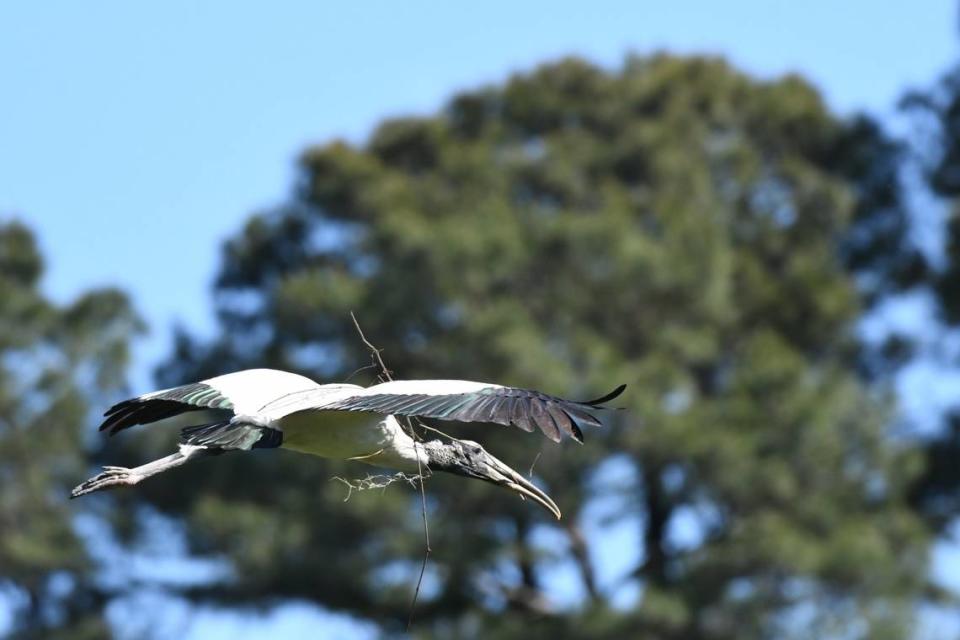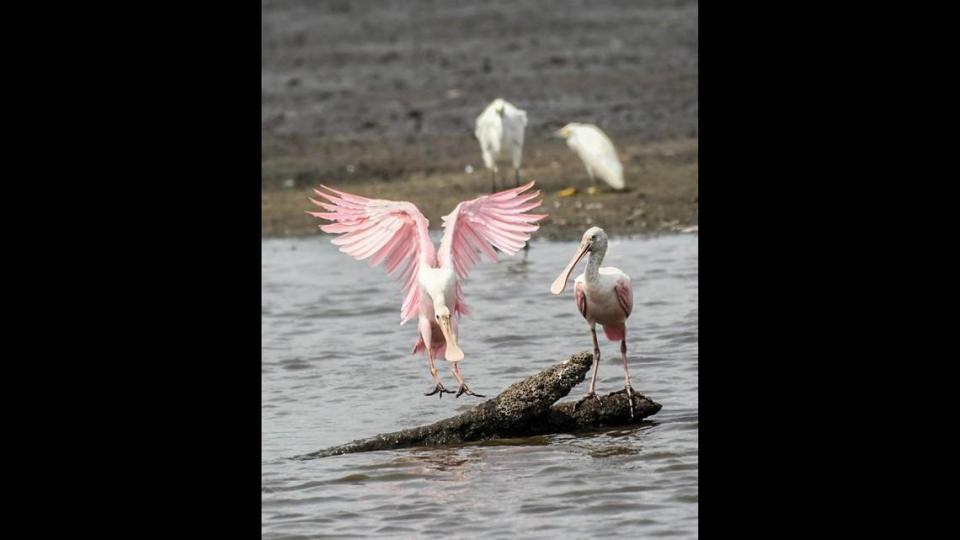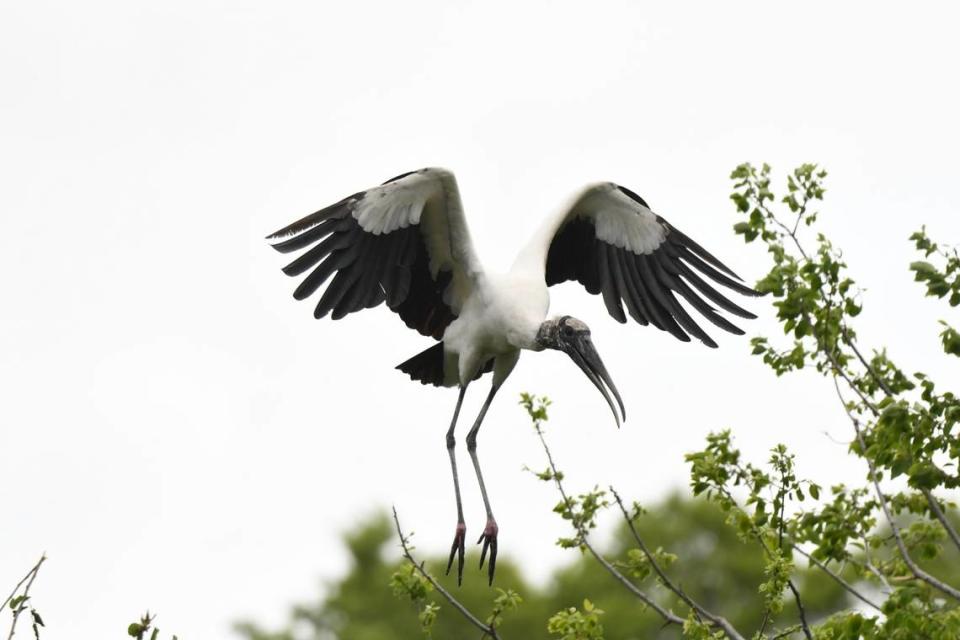Prehistoric-looking bird is nesting in this Lowcountry sanctuary. ‘They dwarf an eagle’
A huge wading bird that looks kind of like a prehistoric pterodactyl has taken up residence at Cypress Wetlands in Port Royal this spring, nesting and producing young.
Birders are beside themselves.
“Having proof that we have wood storks actually breeding here in the Lowcountry at a special place like Cypress Wetlands is such great news,” says Jenn Clementoni, a seasoned birder and master naturalist who serves on the board of Friends of Cypress Wetlands.
Bald-headed wood storks, which are white with 5 1/2-foot wingspans, began making appearances at Cypress Wetlands in the 2000s, Clementoni said.

But this year, they have arrived in greater numbers. And they are nesting for the first time.
Clementoni also has documented two roseate spoonbill at Cypress this spring, another unusual-looking bird that stands out.
Younger roseate spoonbills are pale pink while adults are a vibrant magenta pink.
“The more shrimp and crabs they eat around here, the pinker they get,” Clementoni says.

Clementoni believes more wood storks and spoonbills are coming to the area because of a loss of habitat in areas such as the Everglades in Florida.
“What they’re doing now is migrating north and trying to find new territories,” Clementoni says.
The northward migration of the birds is a good case for why preservation of the Lowcountry wetlands is important, Clementoni said. It also “shows what proper stormwater management can do,” added Clementoni. Cypress Wetlands serves as a stormwater management system that collects and manages stormwater for the town of Port Royal.
Clementoni has counted 16 wood stork pairs this year including five that are nesting and one that has produced a pair of baby wood storks. The wood storks have colonized one tree, she said.
With the big wing span and long, knife-like beaks, wood storks are turning heads at Cypress, where hundreds of egrets and heron species congregate in colonies to nest and roost.
“People aren’t used to seeing them so they are fascinated,” Clementoni says.
To Clementoni, their prehistoric features make them look similar to a pterodactyl, the flying reptile of the dinosaur days.
“They dwarf an eagle,” Clementoni says of wood storks.
Another unusual feature is their knees, which buckle backward.

Rosetta spoonbills and wood storks are both wading birds that feed in shallow water so Cypress is a perfect place for them because it doesn’t have large tidal swings, Clementoni says. They also are social, meaning they will use the same colonies.
With wood storks now colonizing at Cypress Wetlands, Clementoni is hopeful that spoonbills will begin nesting there, too.
South Carolina now accounts for 20% of the wood stork population, according to the Audubon Society. The species is a common nesting bird from coastal Mexico and northern Argentina throughout interior South America, the Caribbean islands of Cuba and Hispaniola and north to the southeastern United States, including Florida, Georgia and South Carolina, according to the Florida Fish and Wildlife Commission.

